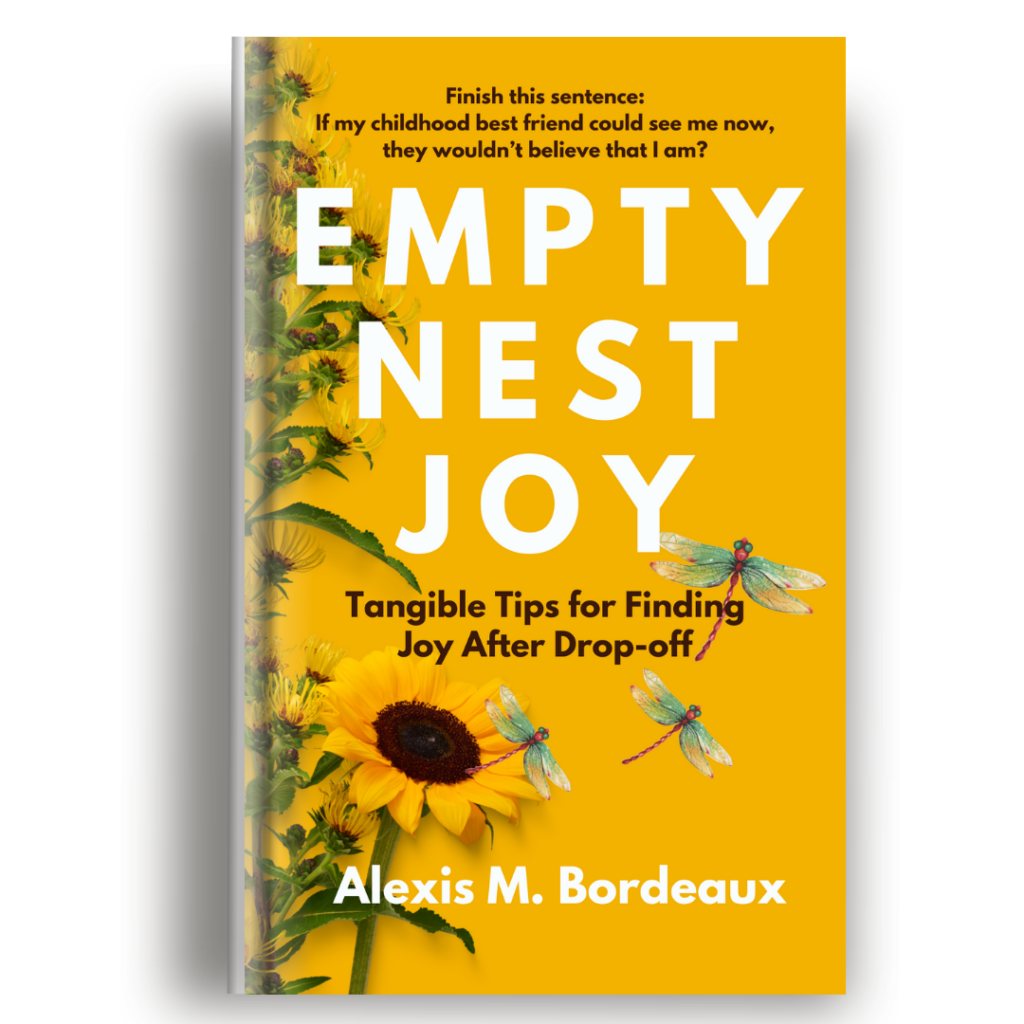- Share on Facebook
- Email this Page
- Share on Reddit
- Share on LinkedIn
- Share on Pinterest
- Share on SMS
- Share on WhatsApp
Personal Growth Strategies for Empty Nesters
The moment the last child leaves the nest marks a significant transition in parents’ lives. While it might be an emotional journey, it also opens up a world of opportunities for personal growth and self-discovery. In this blog post, we will explore powerful strategies for empty nesters to rediscover themselves, embrace personal growth, and find a renewed sense of purpose. Let’s embark on this transformative journey together.
Embracing Change:
1. Navigating the Emotional Landscape:
- Addressing the mixed emotions that come with an empty nest
Addressing the mixed emotions that accompany an empty nest is an essential aspect of navigating this significant life transition. It’s entirely natural for parents to experience a range of feelings, from a sense of loss and loneliness to newfound freedom and opportunity.
The departure of children from the family home often triggers waves of nostalgia, reflecting on the moments that shaped the family dynamic over the years. This emotional complexity can be overwhelming, and acknowledging these feelings is the first step toward understanding and coping with the changes.
In this emotional landscape, empty nesters must grant themselves the grace to grieve the end of a chapter while embracing the beginning of a new one. It’s perfectly normal to feel a sense of emptiness initially, as the routines and roles once defined by parenthood undergo a profound shift.
Open communication within the family about these emotions fosters understanding and support, helping family members navigate this transition collectively. Addressing these mixed emotions requires a delicate balance of self-reflection, mutual understanding, and the acknowledgment that the journey toward rediscovery and personal growth is an ongoing process filled with both challenges and exciting possibilities.
- Strategies for coping with the feelings of loss and adjusting to a new normal
Coping with the profound feelings of loss and adapting to a new normal as an empty nester involves a deliberate and compassionate approach. Initially, it’s crucial to acknowledge and validate the emotions associated with the sense of loss. This might include moments of sadness, loneliness, or even a questioning of one’s identity as a parent.
Engaging in open conversations with a partner or close friends about these feelings can provide a supportive outlet for expression and foster a sense of understanding. Additionally, seeking solace in activities that bring comfort, such as journaling, meditation, or engaging in hobbies, can be therapeutic in processing and gradually alleviating the weight of these emotions.
As the process of adjustment unfolds, embracing a new normal becomes paramount. Empty nesters can focus on rediscovering their individual identities and redefining their daily routines. Cultivating a sense of purpose beyond the role of a parent involves setting new personal goals and prioritizing self-care. Establishing a balance between solitude and socialization is crucial, as it allows for introspection while also nurturing connections with friends and the broader community. Embracing a mindset of growth and adaptation encourages the exploration of fresh opportunities, contributing to the creation of a fulfilling and enriching new chapter in life.

2. Shifting Perspectives:
- Changing the narrative from loss to liberation
Changing the narrative from loss to liberation is a transformative shift that empowers empty nesters to embrace the opportunities inherent in this new life phase. Rather than framing the departure of children as a void to be filled, viewing it as a liberation allows individuals to redefine their sense of self and purpose.
This shift in perspective involves recognizing the potential for personal growth, pursuing passions set aside during the demands of parenting, and acknowledging the newfound freedom to explore uncharted territories. Practically, it involves reframing negative thoughts into positive affirmations, focusing on the exciting possibilities that come with an empty nest. Engaging in activities that bring joy and fulfillment, setting personal goals, and seeking out new experiences contribute to this sense of liberation, enabling empty nesters to savor their autonomy and rediscover their own paths in life.
- Embracing the freedom to rediscover personal passions and interests
Embracing the freedom to rediscover personal passions and interests is a liberating and invigorating aspect of the empty nest journey. As children embark on their independent paths, empty nesters find themselves with a surplus of time and opportunities to rekindle hobbies and interests that may have taken a backseat during the parenting years. To do this, it’s essential to reflect on past passions and identify activities that bring genuine joy.
Creating a schedule that includes dedicated time for these pursuits helps prioritize personal fulfillment. Whether it’s revisiting a long-lost hobby, exploring new interests, or immersing oneself in creative outlets, embracing this newfound freedom allows empty nesters to reconnect with their authentic selves and cultivate a sense of purpose that extends beyond their roles as parents. The key lies in recognizing the potential for personal growth and joy in pursuing activities that resonate with individual passions.
Self-Reflection and Goal Setting:
3. The Power of Self-Reflection:
- Encouraging introspection to understand personal desires and goals
Encouraging introspection to understand personal desires and goals is a pivotal aspect of the empty nest experience. As the responsibilities of active parenting shift, empty nesters have a unique opportunity to turn their focus inward and reflect on their individual aspirations. Taking the time for self-discovery involves a deliberate and honest exploration of what brings joy, fulfillment, and a sense of purpose.
Journaling, meditation, or engaging in quiet moments of reflection can be invaluable tools in this process. By delving into one’s innermost thoughts and desires, empty nesters can gain clarity on their values, passions, and long-term goals, laying the foundation for a purposeful and intentional next chapter in life. This introspective journey not only fosters personal growth but also empowers individuals to make choices aligned with their authentic selves.
- Journaling exercises for self-discovery and clarity
Journaling exercises play a crucial role in the journey of self-discovery and clarity for empty nesters. In the midst of a significant life transition, the act of putting thoughts on paper provides a therapeutic outlet for processing complex emotions and gaining insights into one’s inner world. Through journaling, empty nesters can explore their desires, fears, and aspirations, creating a space for honest self-reflection.
Structured prompts can guide individuals to delve into their values, goals, and the activities that bring them joy. This reflective practice not only aids in understanding the self but also acts as a compass for navigating the uncharted territories of life post-empty nest. The process of putting pen to paper becomes a powerful tool for transformation, enabling empty nesters to gain clarity on their personal narratives and chart a course toward a future that aligns with their authentic selves.

4. Setting Personal Goals:
- Establishing realistic and inspiring goals for the next chapter
Establishing realistic and inspiring goals for the next chapter as an empty nester is a cornerstone for cultivating purpose and direction in this transformative phase of life. Setting specific, achievable objectives provides a roadmap for personal growth, creating a sense of motivation and fulfillment. Realistic goals help individuals navigate the initial adjustments by breaking down larger aspirations into manageable steps.
Simultaneously, inspiring goals act as beacons, guiding empty nesters towards pursuits that resonate with their passions and bring a renewed sense of purpose. Whether it’s embarking on a new career path, pursuing educational endeavors, or focusing on personal wellness, goal-setting not only fosters a proactive mindset but also ensures that the post-empty nest journey is characterized by continuous self-improvement and the pursuit of meaningful objectives.
- Creating a roadmap for achieving personal aspirations.
Creating a roadmap for achieving personal aspirations is essential for empty nesters, as it transforms abstract dreams into tangible, actionable steps, providing a clear trajectory for the next phase of life. This process involves careful consideration of short-term and long-term objectives, breaking them down into manageable milestones.
Begin by identifying specific aspirations, whether they involve career transitions, travel plans, or personal development goals. Once the aspirations are defined, outline the necessary actions, resources, and timelines needed to realize them. Regularly review and adjust the roadmap as circumstances evolve, allowing for flexibility while maintaining a sense of purpose. Engaging in this strategic planning not only instills a proactive mindset but also ensures that the post-empty nest period becomes a purposeful and fulfilling journey, guided by intentional steps toward personal fulfillment and growth.
Strengthening Relationships:
5. Nurturing Relationships Beyond Parenthood:
- Strategies for maintaining strong connections with adult children
Maintaining strong connections with adult children as an empty nester involves a delicate balance of fostering independence and staying emotionally connected. Regular and open communication is paramount; leverage technology for video calls, messages, and even virtual family gatherings. Plan occasional visits to spend quality time together, creating opportunities for shared experiences.
Encourage a supportive environment where your adult children feel comfortable sharing their lives while respecting their autonomy. Flexibility and understanding are key, allowing the relationship to evolve naturally. By actively participating in their lives, offering guidance when sought, and celebrating their achievements, you can ensure that the parent-child bond remains strong, transforming into a supportive adult-to-adult connection.
- Building a supportive network of friends and family
Building a supportive network of friends and family during the empty nest phase becomes a cornerstone for emotional well-being. Actively engage in social activities, join clubs, or participate in community events to expand your social circle. Foster deeper connections by hosting gatherings or initiating shared hobbies, creating bonds that go beyond familial ties.
Embrace the opportunity to make new friends, fostering relationships with individuals who share similar interests and values. Cultivate a supportive environment where mutual understanding and encouragement thrive, ensuring that your network becomes a source of comfort, joy, and shared experiences. This diverse and supportive network acts as a safety net during the inevitable transitions, providing companionship and enriching the empty nest journey with a tapestry of meaningful connections.

6. Cultivating New Friendships:
- Joining clubs, meetups, or communities to meet like-minded individuals
Joining clubs, meetups, or communities to meet like-minded individuals as an empty nester holds immense importance in fostering a sense of belonging and shared interests. In these social settings, empty nesters can connect with individuals who are navigating similar life transitions, providing a support system that understands the unique challenges and opportunities of this phase.
Whether it’s a book club, a hobby-based meetup, or a community service organization, these gatherings offer not only the chance to forge new friendships but also to explore and rediscover passions. The shared experiences within these groups create a supportive network that contributes significantly to the overall well-being and fulfillment of empty nesters.
- How forming new connections contributes to personal growth
Forming new connections as an empty nester contributes significantly to personal growth by exposing individuals to diverse perspectives, ideas, and experiences. Engaging with people from different walks of life outside the familial context encourages an expansion of one’s worldview and challenges existing assumptions. These new connections act as catalysts for self-discovery, pushing empty nesters to explore facets of their personality that may have been dormant.
By fostering relationships with individuals who bring varied backgrounds and insights, personal growth becomes a dynamic and ongoing process. These connections not only provide a rich tapestry of experiences but also serve as valuable sources of inspiration, encouraging empty nesters to embrace change, seize opportunities, and continually evolve on their journey of self-discovery.

Building a Vision for the Future:
7. Creating a Vision Board:
- Visualizing and manifesting personal and professional aspirations
Visualizing and manifesting personal and professional aspirations becomes a powerful tool for empty nesters navigating the uncharted waters of this life phase. By creating a vivid mental image of their desired future, individuals can align their actions and decisions with their overarching goals.
Visualization serves as a motivational force, instilling a sense of purpose and direction. To manifest aspirations, consider creating vision boards that incorporate visual representations of specific goals and dreams. This tangible representation acts as a daily reminder of the aspirations, reinforcing the commitment to the journey ahead.
Visualization fosters a positive mindset, empowering empty nesters to proactively shape their destinies, whether through personal growth, new endeavors, or the pursuit of passions that might have taken a backseat during the parenting years.
- A step-by-step guide to crafting a vision board
Crafting a vision board as an empty nester is a transformative and creative process that can bring clarity and inspiration to your aspirations. Begin by reflecting on your personal and professional goals, and acknowledging the desires that fuel your sense of purpose. Collect magazines, images, and quotes that resonate with these aspirations. Next, select a medium for your vision board, whether it’s a physical corkboard or a digital platform.
Arrange the chosen elements on the board in a way that visually represents your dreams, creating a cohesive and visually appealing collage. Include specific images that evoke the emotions associated with achieving your goals. Place the vision board in a prominent location where you’ll encounter it daily, serving as a constant reminder of your aspirations. Regularly revisit and update your vision board as goals evolve, ensuring that it remains a dynamic tool for manifestation and a source of motivation throughout your journey as an empty nester.
8. Goal Review and Adaptation:
- Regularly evaluating and adapting personal goals
Regularly evaluating and adapting personal goals as an empty nester is essential for fostering growth and ensuring alignment with evolving aspirations. The empty nest phase is characterized by dynamic changes, and what may have been a priority initially might shift over time. By periodically revisiting and reassessing goals, individuals can celebrate achievements, recalibrate expectations, and set new benchmarks.
This practice enables a more fluid and responsive approach to personal development, ensuring that goals remain meaningful and reflective of one’s evolving identity. The process of reflection and adaptation allows for a continuous journey of self-discovery, guiding empty nesters toward a life that is authentically aligned with their values and passions.
- How flexibility contributes to long-term happiness
Flexibility plays a pivotal role in contributing to long-term happiness as an empty nester. Embracing change and remaining adaptable to shifting circumstances fosters resilience and a positive mindset. Life after the empty nest is inherently dynamic, presenting unforeseen opportunities and challenges.
By cultivating flexibility, individuals can navigate these twists and turns with grace, adjusting expectations and finding joy in the unexpected. Flexibility also allows for spontaneity and the exploration of new passions, contributing to a sense of fulfillment and contentment. Rather than rigidly adhering to a predefined path, embracing flexibility empowers empty nesters to savor the journey, find joy in the present moment, and cultivate a lasting happiness that adapts to the ever-changing landscape of life.


Personal Growth Strategies for Empty Nesters








GIPHY App Key not set. Please check settings